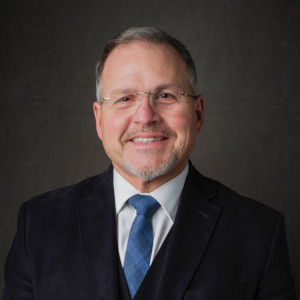Words and Thoughts of President Alan R. Miciak
Ohio at a Crossroads
As a Whitney Elementary School fourth grader in March, 1969, I would gaze out the schoolbus window in the early morning dark, unaware of what was happening 120 miles overhead in low-earth orbit.
But the engineers at Crawford Fitting Company in nearby Solon, Ohio were paying close attention. They had designed and built the Swagelok valves and fittings that kept oxygen flowing to astronaut “Rusty” Schweikart as he stepped out of the Apollo 9 lunar module orbiting above the Earth. This was NASA’s first full rehearsal of the moon landing planned for mid summer, and an inflection point for one of Ohio’s great manufacturing success stories.
While many point to that landing a few months later by Ohio-born Neil Armstrong and fellow astronaut Edwin “Buzz” Aldrin as unifying a global identity, the sales and supply chain teams at Crawford/Swagelok were already setting a plan for globalization in motion. In that same year, 1969, they opened the company’s first European regional warehouse to serve customers in The Netherlands, Austria, Belgium, Germany, Switzerland, and the UK.
Global Trade Pivots
We just marked the 53rd anniversary of Apollo 11’s successful moon landing. During that time, the globe has united in at least one significant way, developing a network of integrated supply chains that connect business to raw materials and labor. In the most recent decade, global trade has grown exponentially, both in value and complexity. Today, about 30% of the value of global exports comes from foreign inputs. In 1990, the share was about 25%.
But that long arc toward globalization might now be pausing — or reversing — in the wake of a pandemic, digitization and automation, geopolitical conflicts and a renewed call for keeping more production/jobs within a tighter circle of allies and closer to home.
Intel Invests in Ohio
Recently, John Carroll University joined a network of Ohio’s top universities in an initiative sponsored by Intel that will see $100 million in investment over the next decade to establish semiconductor manufacturing education and research collaborations. Intel will invest $50 million directly in Ohio higher education institutions. An additional $50 million from Intel will be matched by $50 million from the U.S. National Science Foundation in national funding opportunities. Intel’s education financing is part of the company’s recent announcement that it would invest more than $20 billion to construct two new leading-edge chip factories in Ohio.
The stakes could not be higher for American companies, Ohio communities, or John Carroll students and alumni. National and state policymakers seek a new path to supply chain resilience, a way to ensure against the kind of vulnerabilities exposed by COVID-19, and Russia’s provocation of war in Europe. A new era of on-shoring and ally-shoring looks to rebuild manufacturing economies in states like Ohio, and in allied democracies globally.
In announcing the Intel investments, Intel Vice President, and Ohio General Manager Jim Evers, said: “Intel is excited to be in Ohio, the new Silicon Heartland and home to what will be one of our most sophisticated semiconductor manufacturing plants in the world.”
Intel’s game changing investment in Ohio mirrors moves by Asian semiconductor makers (Taiwan Semiconductor, Samsung ) which likewise want to expand their geographic diversity. These transitions will take a decade or more, signaling a new long-term view of the world.
Intel’s move coincides nicely with John Carroll’s expanded offerings in engineering physics (a combination of liberal arts, natural sciences, and broad engineering courses) and our commitment to securing ABET accreditation. Our engineering and physics alumni advance next generation science for the likes of NASA, AstraZeneca, and the US Naval Research Laboratory.
Our newest faculty member, Assistant Professor Cory Gloeckner, typifies the JCU advantage, with doctoral degrees in both biomedical engineering and theology. His broad grasp of engineering disciplines, as well as physics, will guide his teaching in Engineering Physics at JCU. His neural engineering research in Brain Computer Interface (BCI) targets the control of external devices using sensors that detect brain activity non-invasively, involving principles of neuroscience, electrical & biomedical engineering, and signal processing and control theory. He also carries out research in theology, focusing on evidence-based theological approaches and ethics, with crossover to science and engineering.
Thinking Beyond Microchips
Ohio ranks third in the United States for manufacturing, with more than 15,000 manufacturers employing almost 900,000 people. Cuyahoga County is Ohio’s largest in terms of manufacturing jobs, home to 123,752 workers. Ohio’s Honda plant in Marysville, global firms such as GE Aviation Systems and Whirlpool, and the iconic brand Goodyear all contribute to more than $40 billion in manufactured exported goods.
American higher education needs to recognize the wide-ranging implications, and prepare future graduates to be leaders in a changing world. The new realities of global trade converge with the other great challenges of our time: climate change, health and economic equity, machine learning/automation, and immigration.
Will American businesses strike a new balance between accountability to shareholders and a larger commitment to stakeholders, including communities and workers? Will American consumers adjust spending habits to account for a new world where goods and services connect more directly to issues of sustainability, equity, and sovereignty?
Materion and Deep Space
Just as I sat in awe as images beamed from the moon in 1969, future John Carroll students are sitting in fourth-grade classrooms across the country watching images from deep space beam from NASA’s James Webb Telescope.
Materion, an advanced material supplier headquartered in Mayfield Heights, played a key role in the production of the mirrors that focus infrared light in the James Webb Telescope. Several other Ohio companies and laboratories contributed to the science and technology aboard Webb.
Our view of the universe continues to expand, even as the challenges here on earth grow more complicated. Our graduates — now and in the future — will need a wider set of more integrated skills to lead us toward a better tomorrow and a greater good.

